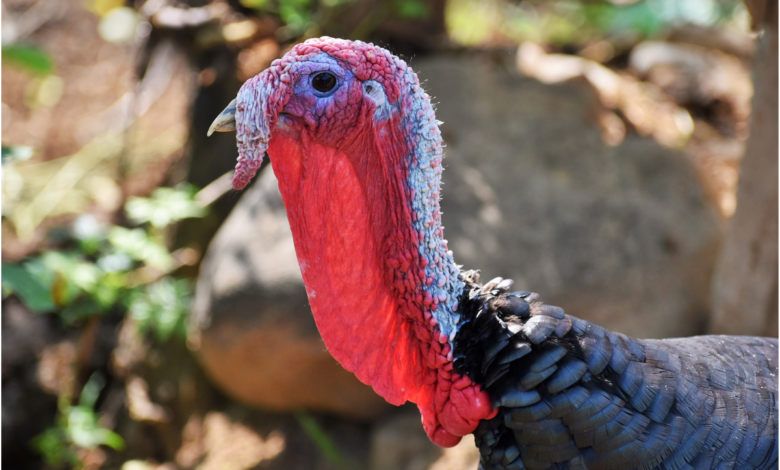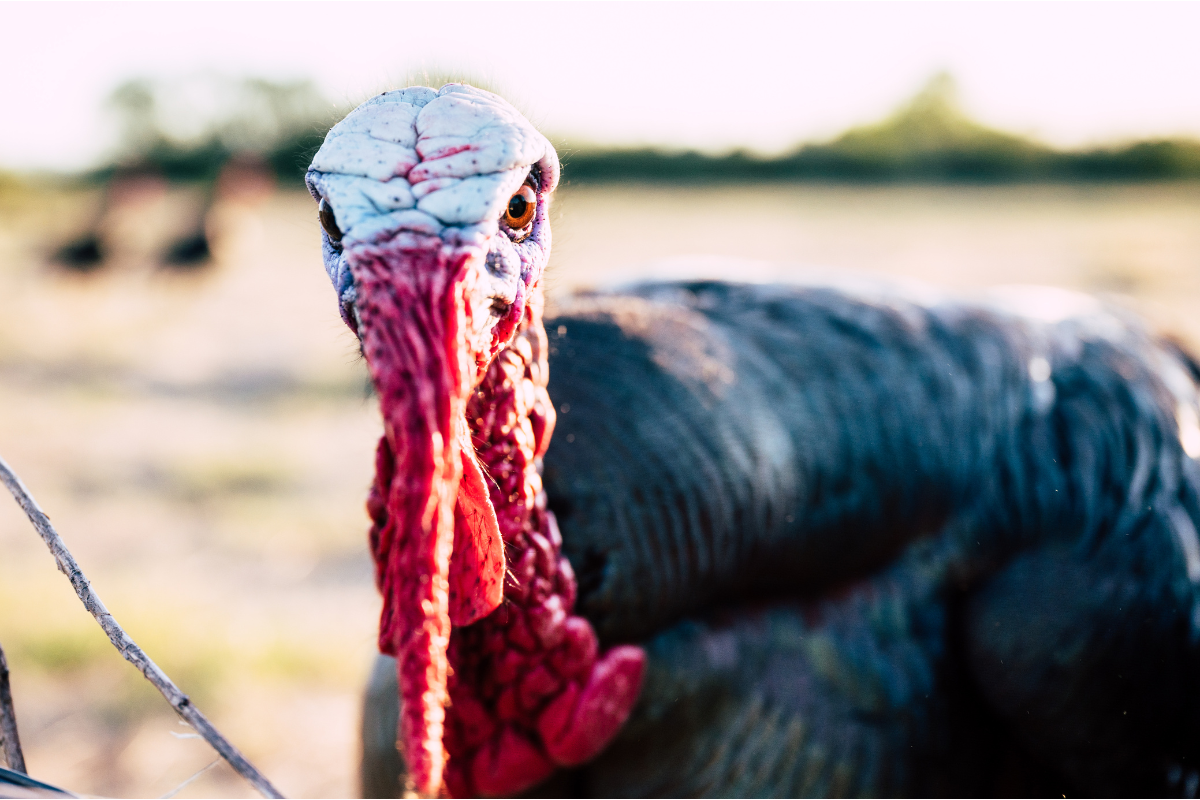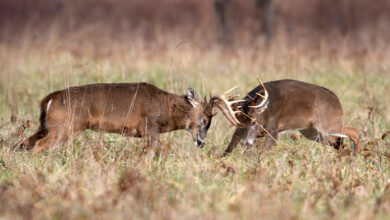What a Turkey Snood Tells You About Your Tom

I have to admit this. Even after hunting turkeys for years, until recently, I had no idea what the “snood” really is.
All I knew was how its changing shape could provide vital hints about the tom’s mood. Honestly, a strutting tom looks colorful, but with the snood added, handsome is not the word that comes to mind. And in a way, the turkey snood reminded me of elephants’ trunks. But in reality, it is nothing like a trunk.
If you are wondering what the heck is the function of this dangling flare, this article will surely help.
What is a Turkey Snood?
The snood is a fleshy projection the turkeys have on the top of their beak. When the tom turkey is relaxed, the snood remains contracted. But once he is charged up and strutting around, the snood elongates and hangs from the bill. This engorgement is a result of excess blood flowing into the snood.
Generally, the snood can be around 5 inches in length and the size increases with age. The hens and jakes have snoods too, but those are less prominent.
Is there a definite purpose for the turkey snood?
At first glance, this dangling piece of flesh looks somewhat ridiculous and super impractical on a hot-headed tom. Surely, the boss gobblers must find it difficult to breathe with the snood covering their nostrils. But, a closer look will reveal that turkey snoods serve more than one practical purpose.
The primary objective of a snood is ornamentation during courtship display. The reason for that is not exactly clear but some theories suggest that long snood length indicates better genes in a gobbler. More on that later.
The other reason is thermoregulation or body temperature control. Remember that birds do not sweat. The featherless head and neck of the turkey help them to lose heat more efficiently.
Ever noticed that turkey dangly thing called wattle that hangs from the chin of the bird? That serves the same purpose too.
The snood increases the skin surface area and helps in heat loss while the turkey is strutting. While strutting under the sun on a hot day, the old tom is really exerting himself and needs a radiator to cool down. The bare skin helps dissipate heat and keep his brain temperature below sub-lethal levels.

Health Indicators
The first step to determining the health of a turkey is to familiarize yourself with how a healthy turkey looks and behaves. Moreover, there can be different versions of “normal” for a particular bird. For example, a bird can change its snood length even without having any specific health issues.
A healthy elongated snood should be red and free from any discoloration. If the snood or the wattle is paler than usual, the turkey can be suffering from anemia or some other illness.
A healthy turkey snood should be free from scabs, or swellings. If you spot any lesions on the snood the bird might be having some health issues. Or else, it can be a sign of an injury. Many turkey farmers cut off the snood in young turkeys to prevent injuries related to fighting.
Keep in mind that you need to check the entire bird and not just the snood to ensure that you do not miss any health issues.
Mood and Behavior
To determine whether the tom is stressed or relaxed check the head of the bird. When the head of a turkey is white and blue with a few touches of red and the snood is not elongated, the bird is in a calm or passive state. But when the head turns red and the turkey snood is erect, the bird is excited.
Now, when the tom is strutting and the snood is hanging out in its full glory, it means that he is focused on the females.
Or else he is ready to establish dominance over the other males. But if the snood starts to shrivel, know that the romance or aggression phase is over. Then again, he might have been alerted by some signs of danger. If you have a shot, it is time to take it.
As a hunter, you can change your tactics depending on the mood of the gobbler and its snood size. You might be carrying a variety of calls as turkey hunting essentials, but you can never be sure of the type of call a strutting gobbler will respond to.
However, by observing the behavior of the tom you can vary the volume and intensity of the hen calls to arouse his interest. Likewise, if the gobbler is in a passive mood, you need to be more cautious with your calling strategy. Such birds can be more focused on survival and super alert about any signs of danger.
Social and Reproductive Status
You may have noticed that the snoods are engorged when the birds are fighting to decide the pecking order. The snood is also an important part of the male turkey’s dominance display.
A tom with a long snood is not only a healthy one but is one step ahead in the hierarchy ladder. Plus, a longer snood indicates higher testosterone levels. That results in the tom being stronger and more aggressive.
Note, that aggressive pecking during a turkey fight can cause injuries to the snood. Turkey fights can get ugly and I have seen the birds pulling on each other’s snoods with their beaks during a fight. A long snood can be a sign for other males to not engage in fruitless fights with the alpha.
Subordinate turkeys have shorter snoods and less coloration than the dominant bird in the group. Their purpose is to help the alpha tom attract mates and act as bodyguards.
You may wonder how snoods determine the mating preference of females. The answer seems to be interesting.
Research suggests that a long snood is a sign of male ‘good genes’ and allows females to pick the appropriate breeding partner. In other words, the snood is a sign of worthiness for the females. Also, males with longer snoods tend to be healthier and contain fewer intestinal parasites. That will result in a higher chick survival rate.
Final Thoughts
The turkey snood can look funny to us, but it is one of the distinct anatomical features of a turkey and serves multiple purposes. While it may not be the most attractive feature of a male turkey, it plays an important role in the process of mate selection and establishing a pecking order.
If you are heading out to the turkey woods with the best turkey loads, keep an eye on the snood. Snood size can give you vital clues about turkey behavior that can help sharpen your hunting skills.



